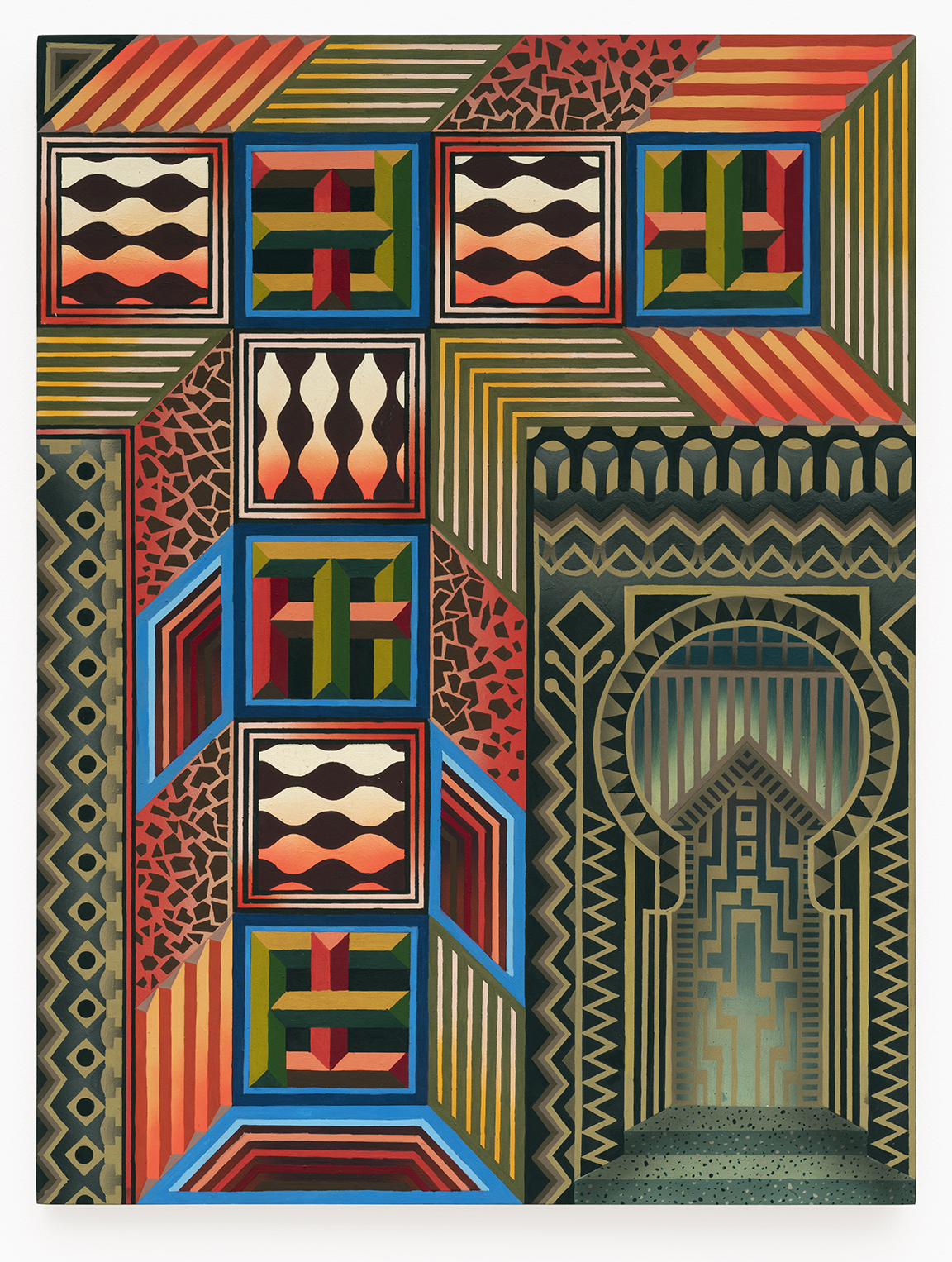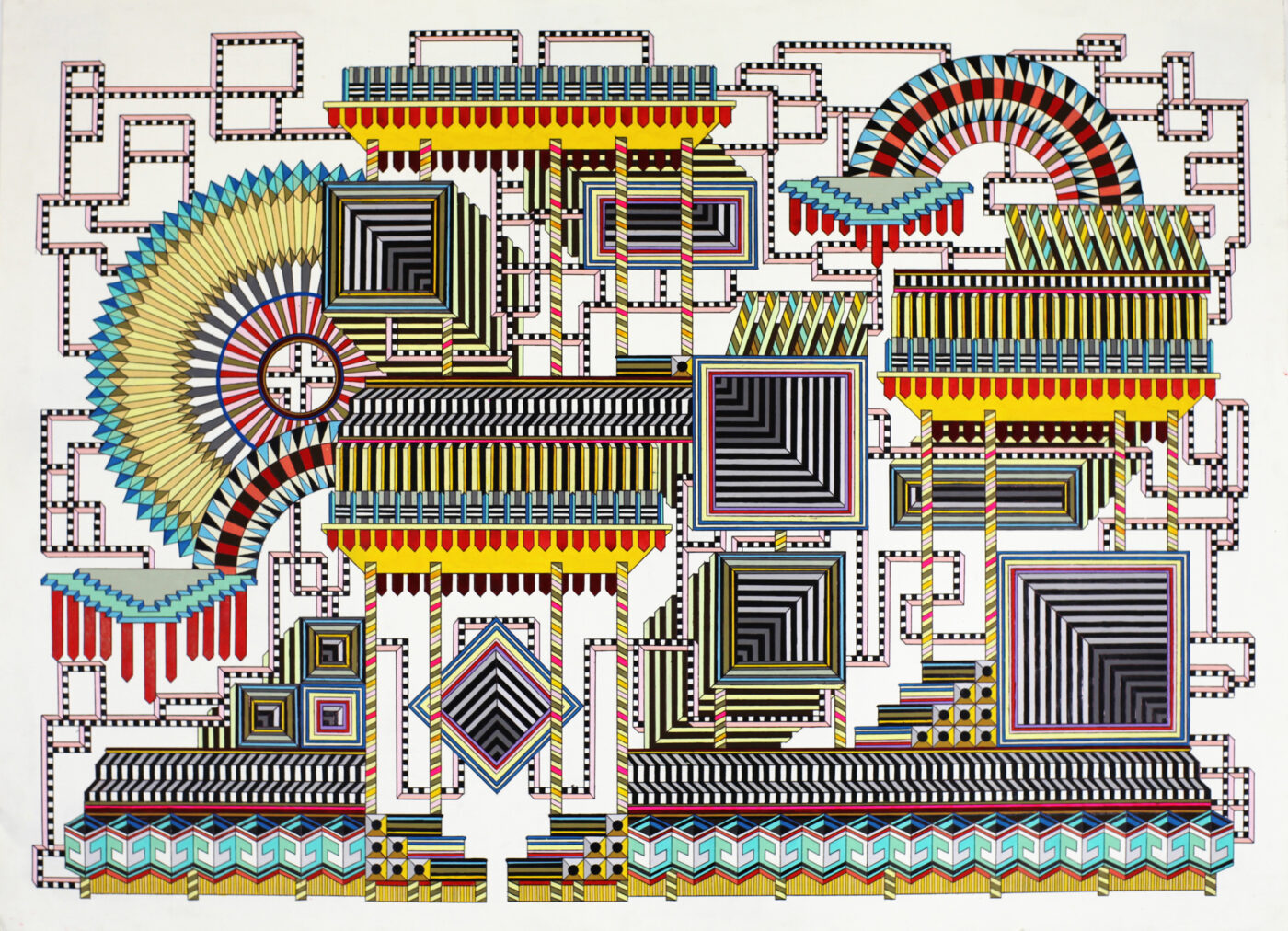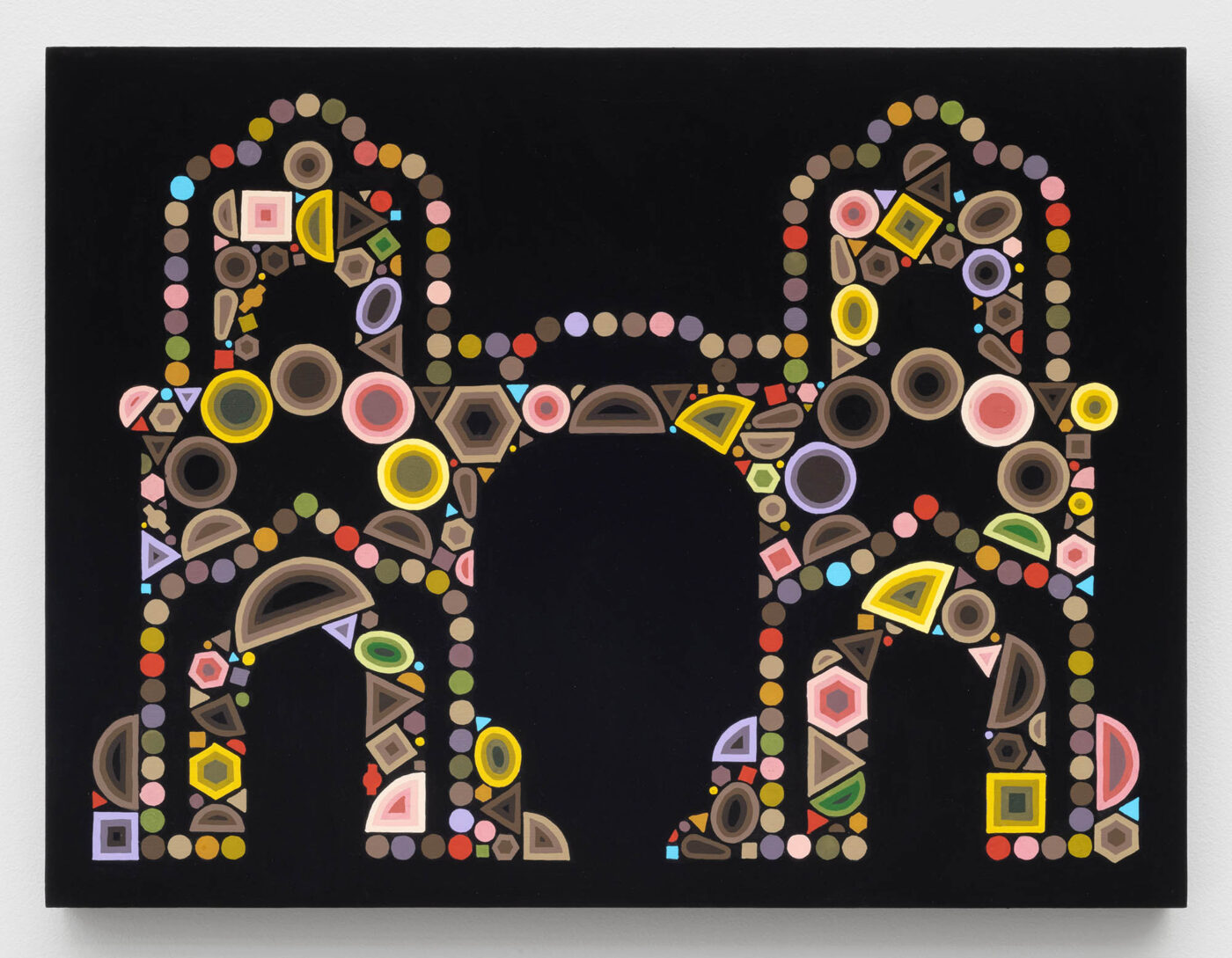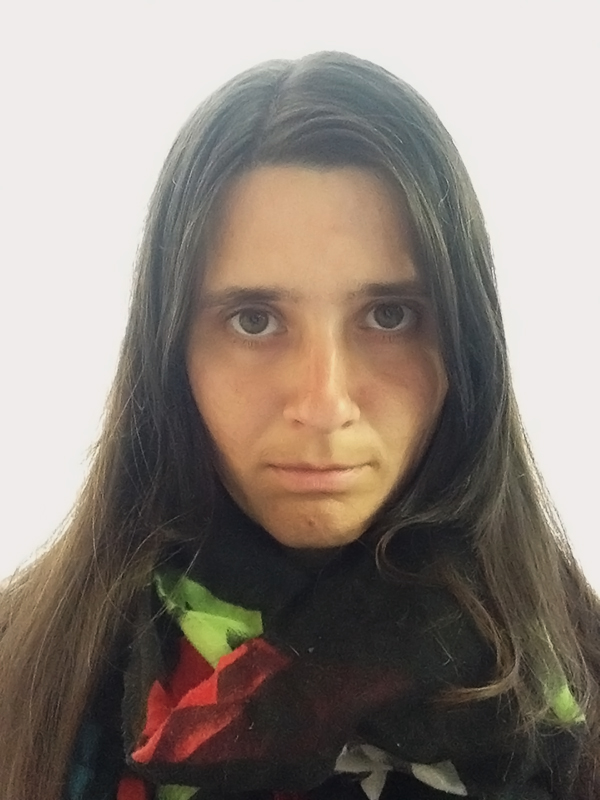
█░█░█ █▀█ █▀█ █▀▄ █▀
▀▄▀▄▀ █▄█ █▀▄ █▄▀ ▄█
“There is nothing new under the sun, but there are new suns.” –Octavia Butler

3–4 minute read, or the time it takes to steep a cup of tea.
Where words fail, images can prevail. Painter and visual artist Edie Fake fills in the blanks left by language to describe and support trans and non-binary lives with stunning architectural renderings. His buildings brim with ornament, brightness, and most importantly, a sense of capaciousness. In the following reflection, Fake shares how these constructions have drafted new spaces for belonging and helped articulate what often goes unnamed.
BY EDIE FAKE
A lack of language can be stifling. For trans and non-binary people language can be used to trap us in contradictions, paradoxes, and definitions that don’t hold water, not to mention bureaucratic vortexes, legal difficulties, and physical violence. Filling a lack of language can be daunting. Even the very basic step of widely introducing a gender-neutral pronoun into a culture without one seemed like a pipe dream less than a decade ago.
When I was a younger sprout, a tender trans twig, a baby non-binary pinecone, I didn’t have the words. Blank spaces unfurled within me where I should have had a word for how I felt, for what I wanted, for how I wanted to live, how I saw my body, or what I knew of myself. The midwestern America around me seemed to lack a language that could truly be as unruly as gender is.

[ID: A rectangular drawing of colorful geometric patterns in warm reds and oranges, with some highlights in green and yellow. Much of the space is made up of tiles, which are full of optical illusions — areas that could be jutting out or recessed, grooves or lines, portals or grates. On the bottom right is a large olive green panel that looks like a keyhole and has patterns like a microchip.]
But even if it was blank in me where words should be, I knew those places were not really empty, and also that I wasn’t alone in this undefined, un-blank position. I had caught glimpses of the trans and non-binary impulses of the world at large — people and places that sparked my recognition and a flame of kinship.
Because English, my first and primary language, lacked the words, I had trouble conveying the queer spaces inside myself until I began drawing architecture. Sometimes grounded and concrete, but mostly winding, ornamental, complex, and ecstatic, drawing architecture became my metaphor — or perhaps my semaphore? Through drafting buildings that were “impossible” or “unbuildable” I saw that a place that cannot be described can still come into focus: a queer space. The things that felt impossible about trans identity also began to reveal themselves as possible.

[ID: An intricate, brightly-colored geometric drawing that suggests a giant circuit or a strange machine. There is a structure like half of a ferris wheel or gear on the left. Thin dotted lines weave in and out like pathways in a Pac-Man game. Small candy-striped pillars appear to hold up larger elements resembling grates.]
I began drawing buildings to try to summon queer space closer to who I was, and to see histories and identities that were never explained to me.
I began drawing buildings to try to summon queer space closer to who I was, and to see histories and identities that were never explained to me. Now, drawing and painting these spaces is at the core of my practice, with the work aiming to be part of a bridge between the ethereal and queer places we can “only imagine” and how we physically build trans and non-binary perspectives into culture. I draw spatial, fantastical, unusual structures, to try to stretch what the world can hold in its structures, and to test if its foundations are capable of shifting.
My latest buildings are “sandcastles,” structures built from a community of small parts, built with effort and joy and with the full expectation their splendor will be washed away, required to re-form in a new place and configuration. Seeing the flowering and articulating of a non-conforming, non-binary, and trans-spectrum world is a vision of resourcefulness, resiliency, dreaming beyond our languages, and building a place for each other.

[ID: On a black background, small, multi-colored shapes of many sizes nestle together to form a structure like two connected towers. The circles, half circles, hexagons, and triangles glow like gems in high contrast against the darkness.]
The building of unbuildable buildings spools out from the wild utopias we are yet to cruise. As trans and non-binary identities begin to slip into a broader recognition, language, in turn, begins to take notice, and the unnamed begins to feel out a name or few. The blank spaces are no longer invisible from lack of language, but alive, full and vivid, and it is now language’s embarrassment that it can’t appropriately describe them.

[ID: In front of a bright white wall, Edie is looking strangely (and perhaps seriously), straight at the camera. They are white and their face is flanked by long, straight dark brown hair and a multicolored scarf.]
Edie Fake
He // Him // His
They // Them // Their
29 Palms, CA
Edie Fake is a painter and visual artist whose work examines issues of trans identity and “queer space” through the lens of architecture and ornamentation.
